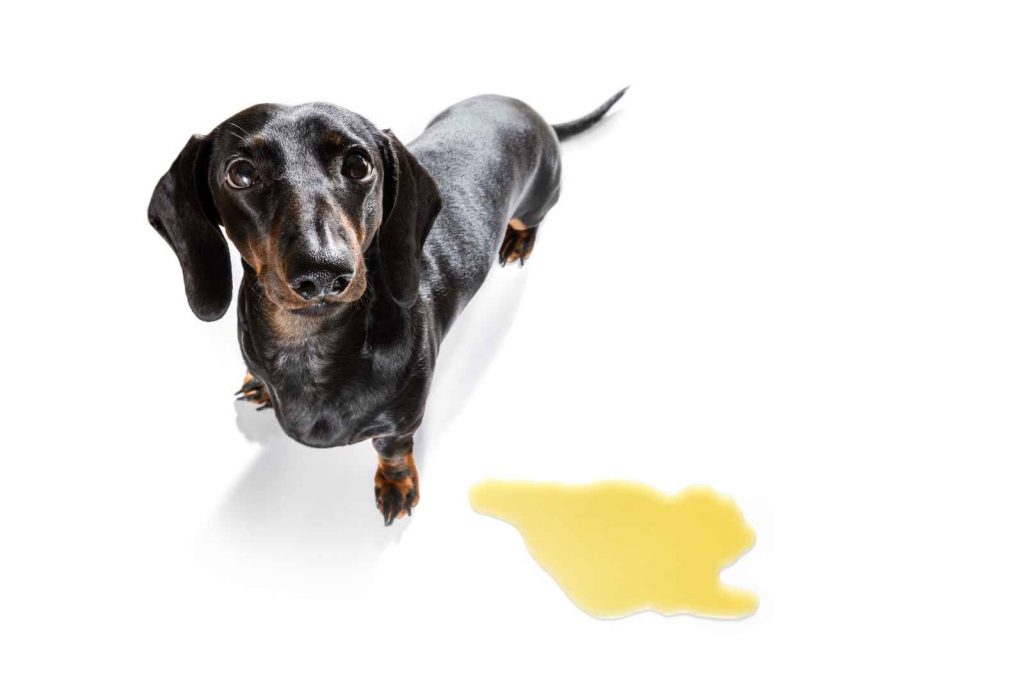
Dogs can suffer from a condition known as urinary incontinence, which is the involuntary loss of urine. This can be a very uncomfortable condition for both the pet and the owner. Fortunately, there are some steps that can be taken to help your dog manage this issue.
The first step is to visit a veterinarian who can diagnose and treat the condition. There are several possible causes of urinary incontinence in dogs, such as bladder infections, urinary stones, nerve damage, or hormone imbalances. After diagnosing the cause, the vet can initiate treatment, which may include antibiotics, anti-inflammatory drugs, or surgery.
It is important to take steps to prevent urinary incontinence from occurring in the first place. Providing your dog with plenty of fresh water and regular exercise are important for keeping their bladder healthy. Additionally, you should feed your dog a high-quality diet that is low in salt and full of fiber to help keep their bladder in shape.
Another important aspect of managing urinary incontinence in dogs is keeping their bladder clean. This can be done by making sure that their bedding and crate is free from any urine or feces, and by keeping their sleeping area clean and dry.
?Is urinary incontinence treated in dogs
dog urinary incontinence is a condition that can be treated with a variety of methods, depending on the underlying cause. Treatment typically begins with diagnosis of the condition. This is done through a physical examination and urinalysis, which can help to determine the cause of the incontinence.
Once the cause is identified, treatment can begin. This may include medications such as antibiotics or anti-inflammatory drugs, to treat infections or inflammation. If the incontinence is caused by a hormone imbalance, hormone therapy may be recommended. In more severe cases, surgery may be necessary.
In addition to medical treatments, there are also lifestyle changes that can help to manage urinary incontinence in dogs. This may include providing plenty of fresh water and regular exercise, and feeding a high-quality diet that is low in salt and full of fiber. Keeping the sleeping area clean and dry is also important, as is making sure that their bedding and crate are free from any urine or feces.
Finally, it is important to look into the possibility of using diapers or specialized clothing to contain any urine that is lost. This can help to keep your pet comfortable and to minimize messes.
?Does urinary incontinence in dogs go away
The answer to this question depends on the cause of the urinary incontinence. If the condition is caused by an infection, such as a bladder infection, it should go away with proper treatment. Similarly, if the cause is a hormone imbalance, hormone therapy can help to restore balance and relieve the symptoms of incontinence.
In some cases, however, the incontinence may be permanent. This may be due to nerve damage, or physical abnormalities of the bladder or urinary tract. In these instances, the incontinence will not go away, but it can be managed with lifestyle changes, medications, and the use of diapers or specialized clothing.
?How to fix urinary incontinence in dogs
The first step in treating urinary incontinence in dogs is to visit a veterinarian for diagnosis and treatment. This may involve a physical examination, urinalysis, and other tests to identify the cause of the condition.
Once the cause is identified, the veterinarian can initiate treatment. This may involve medications such as antibiotics or anti-inflammatory drugs, hormone therapy, or even surgery in more severe cases.
In addition to medical treatment, there are also lifestyle changes that can help to manage urinary incontinence in dogs. This may include providing plenty of fresh water and regular exercise, and feeding a high-quality diet that is low in salt and full of fiber. Keeping the sleeping area clean and dry is also important, as is making sure that their bedding and crate are free from any urine or feces.
Finally, it is important to look into the possibility of using diapers or specialized clothing to contain any urine that is lost. This can help to keep your pet comfortable and to minimize messes.
